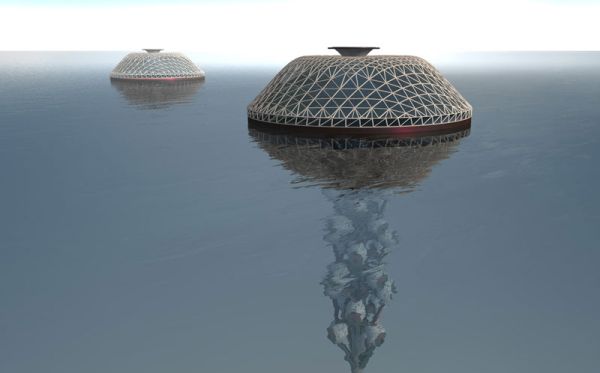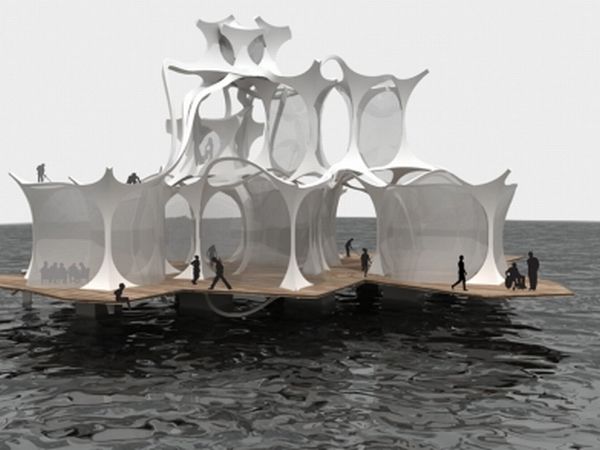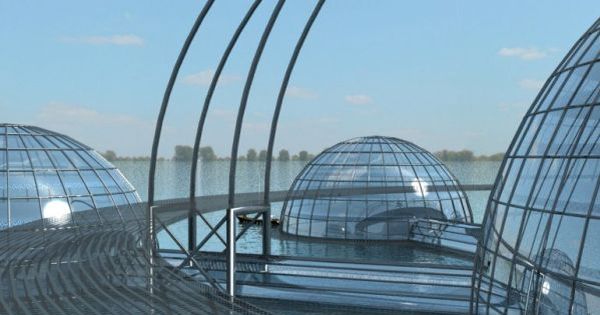The problem:
The progress made by man is no doubt tremendous. Man has been able to reach the moon and do things that would be considered miraculous in the past – all with the aid of science and technology. Some things, however, still elude his control. Nature cannot be conquered and can only be co-existed with. This is something that man has learned via the innumerable natural disasters. When earthquakes, hurricanes, tsunamis and volcanoes happen, man is reduced to a mere witness. The only solution seems to be in precaution rather than prevention. Thus the idea of devices that can monitor and give indications of such activity came into picture. Better still is the idea of utilizing the vast underwater world which is relatively stable against many such influences. Since more than 70 percent of the earth’s surface is covered with water, it makes sense to construct self-sustaining and self-sufficient underwater structures which can help to avoid many of the natural disasters.

How serious is it?
The magnitude of losses during times of natural disasters is very huge. These losses include the loss of human lives, health, homes, property and livelihood. The International Monetary Fund (IMF) estimated that about $652 billion was the toll due to natural disasters in the 1990s. The number of such disasters seems to be growing too. While they were fewer than 100 in 1975, their number had crossed 400 in 2005. One decade before, 1.6 billion people were affected by natural disasters. This decade saw 2.6 million people being affected. With the cost of living being at least 15 times higher than it was in the 1950s, the economic damage that the natural disasters bring about is only going to rise with times.
The panacea:
The solution comes from a radical idea which, if made practical, would be the panacea against the natural disasters. The deep waters are protected from most of the natural disasters. Even in case of a tsunami, the external surface of the waters is affected more than the interiors. Thus, underwater worlds provide safety and self-sustainability. These volumetric attributes of the seas and oceans will provide the apt support for humankind in apocalyptic situations. The oceans and seas are treasure troves of resources and sustaining large populations with food and water will not be a problem. Thus the solution of designing underwater skyscrapers and cities will be self-sufficient for the race to sustain.
Inspiration:
The inspiration comes from the most primitive and strongest instinct in man – to survive. Science fiction has often used the idea of undersea cities where humanity finds safe haven in. There is also a line of thought which is very interesting and worth pursuing. It says that the more man tampers and attacks nature, the more natural disasters that will occur. This follows the law of action and reaction. In such a scenario, the thought of living in harmony with nature by blending with it is another strong inspiration for the construction of undersea cities. The same instinct for survival has also inspired ideas such as living in space.
Difficulties:
The difficulties involved in the idea are not hard to imagine. As pictured in many science fiction movies, one of the foremost problems would be that of accommodating everyone. Currently, there are more than 7 billion people on the planet. Making cities of such a scale so as to accommodate the people would be a huge problem. Space would be no constraint for water covers 70 percent of the earth’s surface. But the time, energy and resources needed to do the same would be tremendous. It will no doubt be the biggest ever project undertaken by humanity.
Alternatives:
Several ideas have reached different stages of implementation and could be helpful in achieving the dream of underwater cities and skyscrapers.
1. AQVA habitat:

The AQVA Habitat is a double structured machine that works in parallel on twin processes – one under the water surface and one above it. Both the ‘machines’ are part of the same system however. The component has been designed to function as a water-purification system while the component above the water surface acts as a space-generator system. The interactions between the hexagonal components above and below the water surface are intended to produce an appealing urban living space. With food, energy and water needs being met, this will act as a fantastic module to develop into underwater cities.
2. Sub Biosphere 2

The Sub Biosphere 2 consists of a central biome that supports eight surrounding biomes. The life-sustenance is done via the central biome that houses all the support systems for air, food, water, electricity. It does this by innovatively controlling the varying pressures at different depths. The surrounding biomes will act as residences for life. The Sub Biosphere will be able to surface and dive into the depths as per the needs and it will utilize the water pressure and currents and a gigantic heart-lung machine to sustain it. This could again be proliferated to create a colony, a society and a city too!
3. Water Scraper:
Aptly named as the waterscraper or more accurately, the hO2+ scraper, this is an autonomous floating unit in the oceans that is a functional, livable and self-sustaining space. The idea is that many such water-scrapers can constitute a floating city! Making use of the winds, the waves, tides and the solar energy, it powers itself for all the needs and thus is a clean and ‘green’ habitat. It has been equipped with bioluminescent tentacles using which it forms a symbiotic association with the sea fauna. As if like a poetic anti-thesis of a skyscraper, the water-scraper grows downwards into the depths rather than rise to heights. The ballast and balancing tanks keep it afloat while the tentacles help in balance and motion. All the different regions are well-located. For instance, the living areas are located just below the surface of water where natural light is the maximum.

